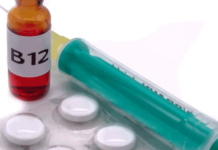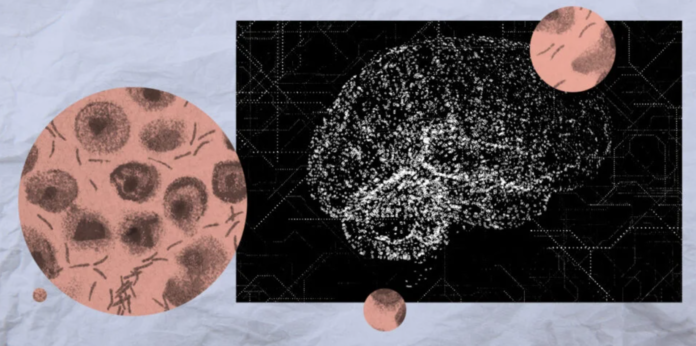Affecting movement, Parkinson’s disease is a degenerative neurological condition with symptoms including tremor, stiffness, and trouble with balance and coordination. Although Parkinson’s does not have a treatment right now, early identification greatly enhances the quality of life for people afflicted. The value of early Parkinson’s disease detection, symptoms to be on lookout for, diagnosis techniques, and preventative advice will be discussed in this paper.
Early Parkinson’s Disease Detection: The Part Innovative Gadgets Play
Technological developments have resulted in the creation of creative devices meant to identify Parkinson’s disease early on, so providing hope for quick intervention and better care. Wearable gadgets include motion sensors and smartwatches can monitor minute variations in gait patterns, tremors, and movement, therefore offering important data for early diagnosis. Common early indicators of Parkinson’s disease, slurred or softening of voice, can be found in apps fitted with voice analysis technologies. Furthermore, specialized tools such as Kinesia ONE or the PDMonitor assess motor symptoms using sophisticated algorithms and give patients and medical professionals real-time feedback. These devices enable people to take charge of their health by tracking disease progression and optimizing treatment strategies in addition to early detection, therefore empowering them.

Detecting Parkinson’s Disease Early
For various reasons, early Parkinson’s disease diagnosis is absolutely vital.
Though Parkinson’s cannot be cured, early intervention can assist to slow down the course of the illness. Early commencement of medications and therapy increases their efficacy.
Early diagnosis lets patients adopt lifestyle modifications including diet and exercise that might raise their general quality of living.
Early diagnosis helps healthcare professionals better control symptoms, therefore lessening the influence on daily activities.
Things to Watch for Symptoms Early stages of Parkinson’s disease often have mild symptoms, which makes diagnosis challenging. Still, there are several important symptoms to be alert for:
1: Shakes
One of the most often occurring early Parkinson’s symptoms is tremor. Usually beginning in the hands or fingers, they could show up as a “pill-rolling” tremor.
When should you worry? If you see a minor shaking or tremor in your hand, particularly while at rest, you should go to a doctor.
2. Bradykinesia—Slowness of Movement
A classic Parkinson’s disease sign, brachykinesia is the slowness of movement. It can complicate even basic chores like walking or buttoning a shirt.
When should one worry: Should you or a loved one clearly be slowing down in activity, you should consult a doctor.
3. Muscle Stiffness
Any area of the body might suffer with muscle stiffness, sometimes known as rigidity, which might restrict range of motion.
If you find stiffness not going away with movement or stretching, it may indicate Parkinson’s disease.
4. Unstable Postures
Postural instability describes issues with coordination and balance that could cause falls.
When should one worry: Regular falls or trouble keeping balance should be seen by a doctor.
5. Writing and Speech Changes
Parkinson’s can induce speech alterations including slurred words or more subdued speech. Writing could also start to seem smaller and more confined.
When should one worry? Should one observe notable changes in writing or speech? See a doctor.
6. Non-Motor Signs
Parkinson’s can also bring non-motor symptoms including loss of smell, sleep problems, and sadness.
When should one worry: Should one get any of these symptoms in addition to motor ones, one should consult a doctor.
Techniques for Diagnostics
Early on especially, Parkinson’s disease diagnosis might be difficult. Still, there are various diagnostic techniques healthcare professionals could apply:
1. Medical Examination and History
A comprehensive medical history and physical examination are the initial stage in Parkinson’s diagnosis. Key symptoms like tremor, bradykinesia, and muscular stiffness will be sought for by the clinician.
Be ready to go into great detail about your symptoms, including when they first began and how they have changed.
2. Neurological Assessment
Your reflexes, coordination, and muscle strength will all be evaluated during a neurological test. The doctor might also review your posture and gait.
What to Expect: The doctor can urge you to do basic chores as tapping your fingers or walking straight forward.
3. Imaging Consultations
Although they can rule out other disorders that might produce similar symptoms, imaging procedures as MRI or CT scans are not used to properly diagnose Parkinson’s.
You might be asked to rule out other neurological problems using an MRI or CT scan.
A DaTscan is a specific imaging test used in order to support Parkinson’s disease diagnostic confirmation. It entails involving a radioactive tracer that hooks to dopamine transporters in the brain.
Expect the test to last between thirty minutes to an hour and be conducted in a hospital or imaging center.
One of the most conclusive approaches to identify Parkinson’s is to observe how the patient reacts to Parkinson’s drugs, such levodopa.
If symptoms become better with medicine, the patient most certainly has Parkinson’s.
Tips for Preventing Problems
Although Parkinson’s disease cannot be exactly avoided, there are numerous lifestyle choices that can lower the risk:
1. Get Frequent Exercise
Regular exercise has been demonstrated to prevent Parkinson’s disease in some measure. Walking, swimming, and yoga among other things help to increase general wellness.
Aim for most days of the week at least thirty minutes of moderate activity.
2. Follow a healthy diet.
A diet heavy in fruits, vegetables, whole grains, and lean proteins can help brain function and lower Parkinson’s risk.
Try a Mediterranean diet; it has been connected to a reduced risk of neurological illnesses.
3. Steers clear of toxins.
Certain chemicals, including pesticides and herbicides, have been connected to a higher Parkinson’s risk.
Using chemicals should be done carefully; wear masks and safety gear.
4. Maintaining Mental Activity
Maintaining brain activity by means of reading, puzzles, and acquiring new abilities could help lower the Parkinson’s risk.
Suggestion: Regularly participate in activities that regularly test your intellect.
5. Schedule Frequent Visitations
Regular visits to your healthcare practitioner will help identify possible medical problems including Parkinson’s disease early on.
See your doctor about any new or aggravating symptoms you experience.
In essence
Management of symptoms and enhancement of quality of life depend on early detection of Parkinson’s disease. Being aware of the early symptoms and obtaining medical treatment right away can help you to slow down the course of the illness and preserve your freedom for as long as possible. Furthermore lowering the risk of Parkinson’s disease is a good lifestyle comprising frequent exercise, a balanced diet, and mental stimulation.
See a healthcare professional if you or a loved one shows Parkinson’s symptoms. Early intervention can significantly help to control the illness and preserve the quality of life.















